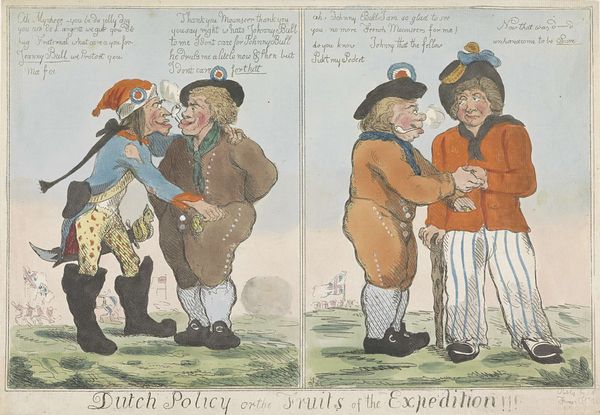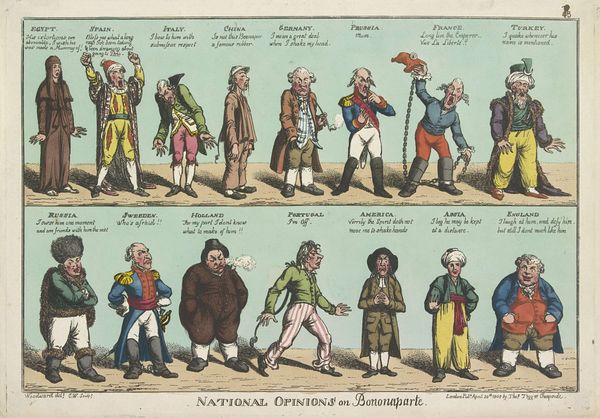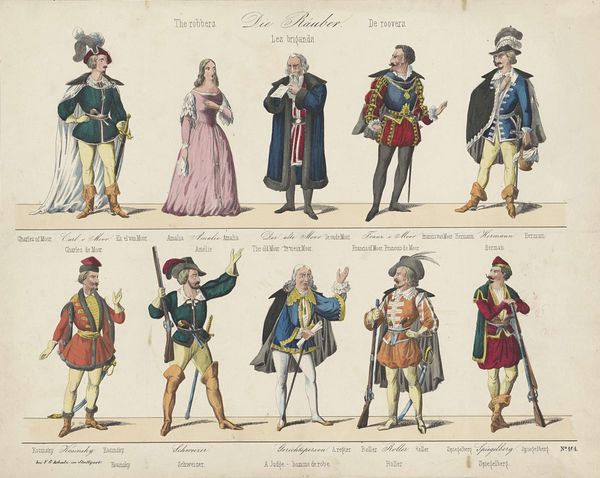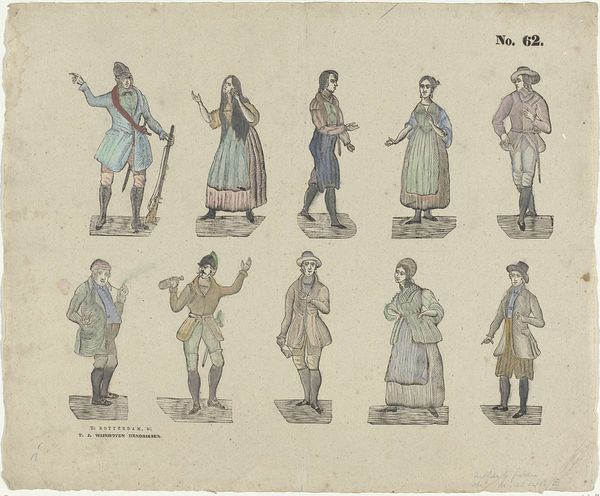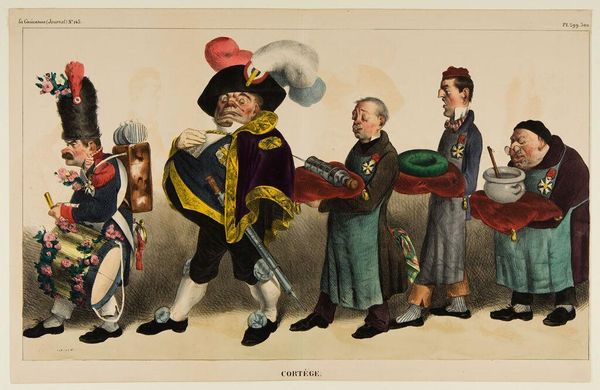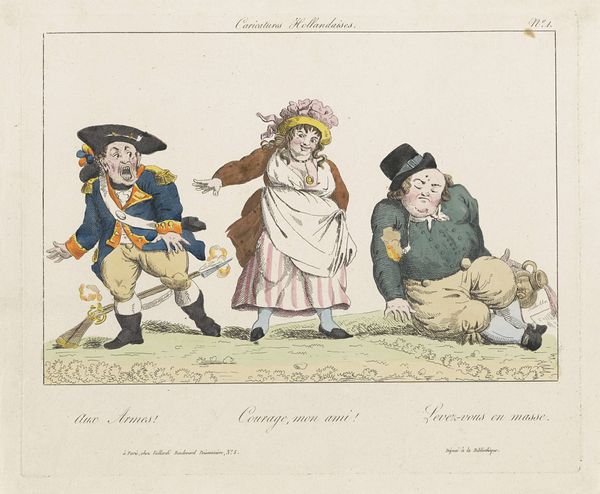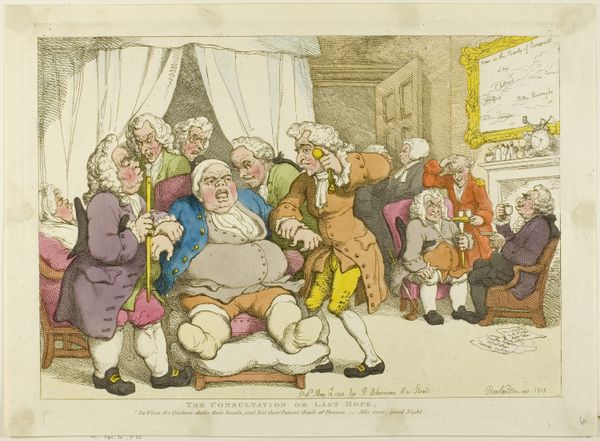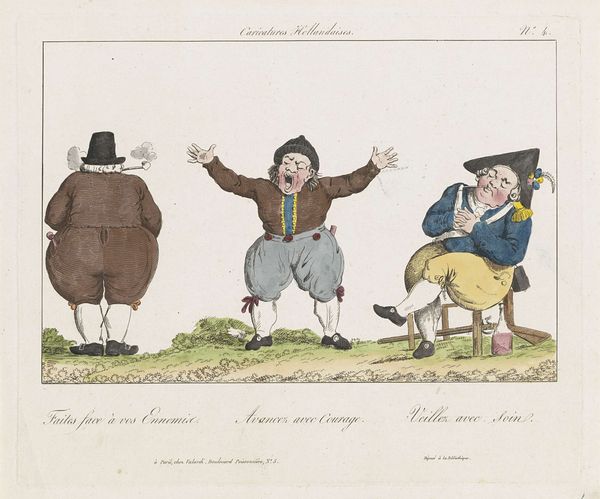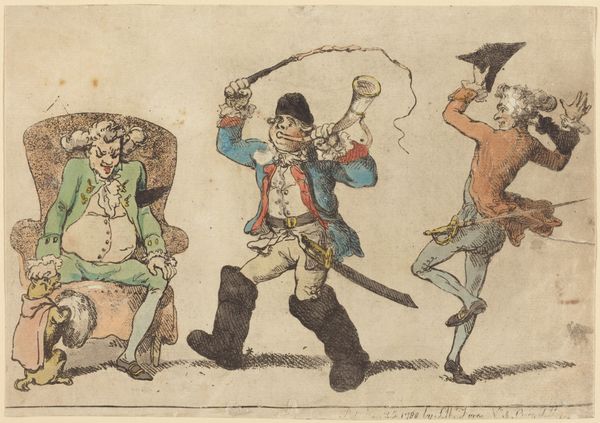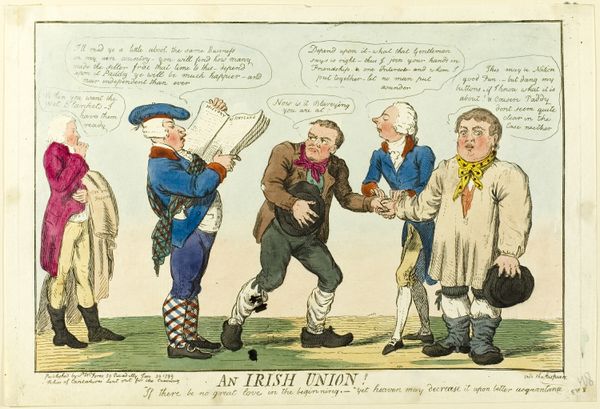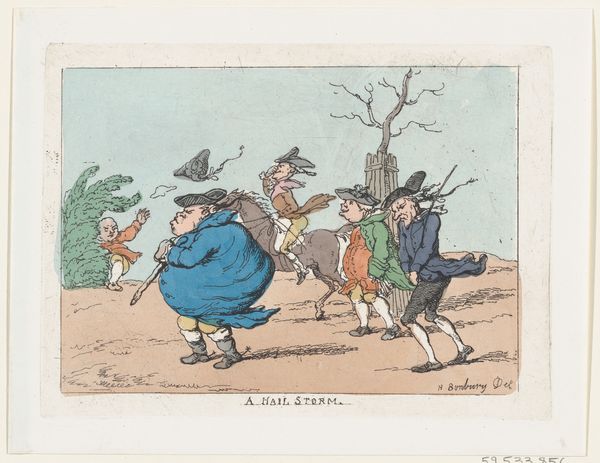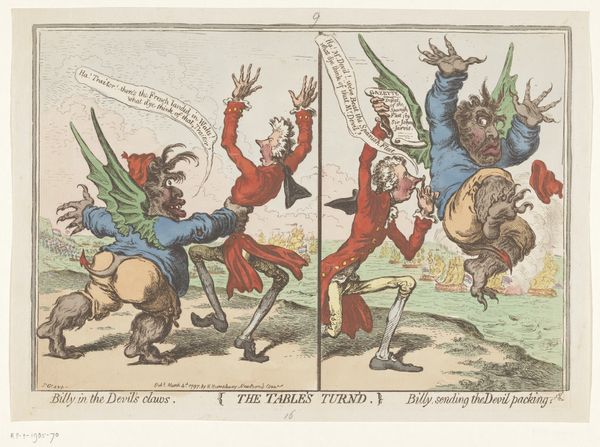
drawing, print, etching, ink, pen
#
drawing
# print
#
etching
#
caricature
#
ink
#
romanticism
#
pen
#
genre-painting
Dimensions: height 341 mm, width 477 mm
Copyright: Rijks Museum: Open Domain
Isaac Cruikshank created this hand-coloured etching, Nieuwe Hollandse Oefeningen, in 1795. Its subject is a Dutch exercise, but these aren't military drills; rather, they are caricatures of Dutch habits and attitudes. Cruikshank uses visual stereotypes to mock the Dutch Republic during a period of political upheaval. At this time, the French, inspired by their own revolution, invaded the Netherlands. The etching reflects British anxieties about the Dutch Republic's stability and its potential alignment with France against British interests. Each figure represents a different facet of Dutch society, from their perceived fondness for alcohol to their mercantile obsessions. The artist's exaggeration serves a political purpose, undermining the Dutch and their capabilities. Examining prints such as this alongside pamphlets, newspapers, and political records of the period helps us appreciate the potent role of satire in shaping public opinion and influencing policy.
Comments
No comments
Be the first to comment and join the conversation on the ultimate creative platform.
